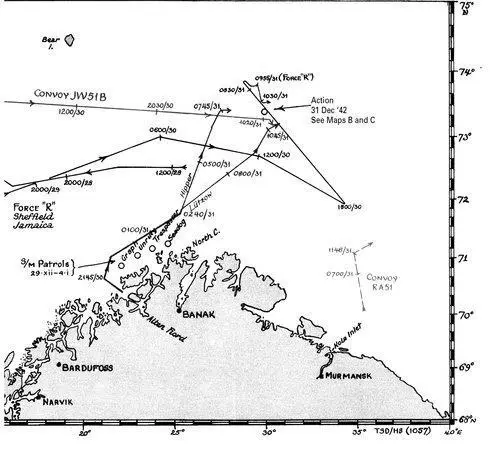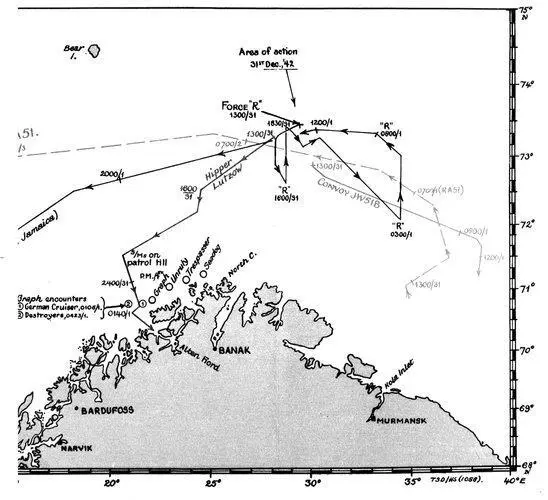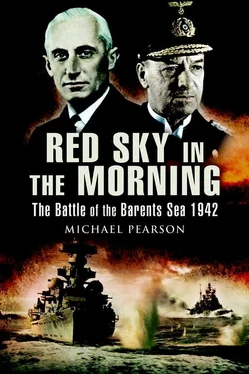This phenomenal effort represents the most prodigious shipbuilding programme ever undertaken, accounting for a total of 56,300,000 deadweight tons (57,200,800 tonnes), at a cost of $13 billion, and constitutes one of the most significant contributions made by any nation to the eventual winning of the Second World War. [196]
The basic premise behind the Liberty ships was to build them faster than it would be possible for the Axis powers to sink them. It was said that they were ‘built by the mile, and chopped off by the yard’, and indeed one Liberty ship is recorded as having been launched 4 days and 15½ hours after her keel was laid. This rapid rate of build inevitably caused a few problems, particularly as inexperienced workers often manned shipyards during the war years. Liberties experienced a high percentage of defects, and 1 in 30 suffered major hull fractures. [197]
Britain placed orders for Liberty ships in US yards, and built similar-sized ships of various standard design types in British shipyards. Adoption of the faster welding method was slow in coming however, and most British-built ships were riveted, although a nod towards modern methods was made with the utilisation of a prefabrication system similar to that in the United States. A significant proportion of ships built in the UK were coal-fired, for the understandable reason that Britain had a considerable coal resource to draw upon. Canada took the opportunity to expand its shipbuilding capacity, and had considerable success in producing standard cargo ships, with designs which tended to follow the British types, but a construction method which favoured welding over riveting. [198]While it would have been impossible to meet the vast tonnage requirements without the massive industrial capacity of the United States, it is also true to say that the US alone could not have met the demands, and the substantial building and repair programmes put in hand by British and Canadian shipyards were vital contributions to ultimate victory.
It was calculated that if a Liberty ship made one loaded trip across the Atlantic she had done all that could be expected, and was unlikely to survive another. The rate at which they would be sunk by the enemy, or would in all probability fall apart due to the way in which they were constructed, would see to that. Despite these pessimistic predictions, war-surplus Liberty ships were snapped up by commercial shipping companies at knock-down prices after the war, and many a fortune was made with them. Liberty ships were to be seen plying the trade routes of the world until the early 1970s, and such was the success of the type that as they came at last to the end of their colourful careers, shipyards around the world fell over themselves to produce designs for ‘Liberty replacement types’. The best-known UK version proved to be the Austin & Pickersgill SD14, which kept the same basic design but with a diesel engine, a deadweight increased to just over 14,000 tons (14,224 tonnes) and much improved cargo handling gear.
—♦—
Of the convoys to Russia, Admiral of the Fleet Sir Dudley Pound commented that they were ‘a most unsound operation, with the dice loaded against us in every direction’. [199]Despite this a total of 4,430,000 tons (4,500,880 tonnes) of essential equipment and foodstuffs were transported by this method, although ship losses were higher than on any other Allied convoy route – 7.8 per cent eastbound, 3.8 per cent westbound (in ballast).
A quarter of all Allied supplies to Russia were carried in the Arctic convoys, but the United States sent almost half its total aid to Russia across the Pacific to Vladivostock, carried in Russian ships which, as Russia was not at war with Japan, travelled largely unmolested.
Behrens, C.B.A. (1955) History of the Second World War: Merchant Shipping and the Demands of War , HMSO.
Bekker, Cajus (1974) The German Navy 1939 – 45 , Reed International Books Ltd.
Bekker, Cajus (1974) Hitler’s Naval War MacDonald & Jane’s.
Brennecke, Jochen Eismeer, Atlantik, Ostsee , German Publication.
Humble, Richard (1974) Hitler’s High Seas Fleet , Pan/Ballantine Books.
Kemp, Paul (1993) Convoy! Drama in Arctic Waters , Arms & Armour Press.
Koop, Gerhard and Peter Schmolke (2001) Heavy Cruisers of the Admiral Hipper Class , Greenhill Books, Lionel Leventhal Ltd.
Pelling, Henry (1999) Winston Churchill , Wordworth Editions.
Pitt, Barrie and Frances (1989) The Chronological Atlas of World War II , MacMillan.
Pope, Dudley 73 North , Weidenfeld & Nicholson.
Ruegg, Bob and Arnold Hague (1993) Convoys to Russia 1941 – 1945 , World Ship Society, revised edition.
Slader, John (1995) The Fourth Service, Merchantmen at War 1939 – 45 , New Era Writer’s Guild (UK) Ltd.
Smith, Michael (2000) Station X , Channel 4 Books.
Toland, John (1997) Hitler , Wordsworth Editions.
van der Vat, Dan (1988) The Atlantic Campaign, The Great Struggle at Sea 1939 – 1945 , Hodder and Stoughton.
Watts, Anthony J. (1999) The Royal Navy: An Illustrated History , Arms & Armour Press, Brockhampton Press.

Map A – Movements 28–31 December (PRO. ADM. 234/369)
Map B – Surface actions 08.30–12.00 hrs, 31 December (PRO. ADM. 234/369)
Map C – Surface actions 12.00–13.00 hrs, 31 December (PRO. ADM. 234/369)

Map D – Movements 31 December – 4 January (PRO. ADM. 234/369)
Page numbers in italics refer to illustrations
Achates , HMS
engagement with Admiral Hipper
sinks after engagement
Admiral Graf Spee
Admiral Hipper
captains’ meeting
crew
engagement with British destroyers
engagement with HMS Achates
engagement with HMS Bramble
engagement with HMS Jamaica
engagement with HMS Obedient
engagement with HMS Onslow
engagement with HMS Sheffield
after engagement
damage from first salvoes
entertainment aboard
war service
Admiral Scheer
Aisthorpe, Lieutenant H.C., RNR
Altenfjord
Ark Royal , HMS
Ashanti , HMS
Austen, Lieutenant-Commander N.H.G., DSO, RN
Ayreshire
Ballot
Barents Sea, conditions on board ship
Belford, Smith
Bermuda , HMS
Berwick , HMS
Bismarck
Blankney , HMS
Bonaventure , HMS
Bramble , HMS
British Expeditionary Force
Bulldog , HMS
Burnett, Rear-Admiral Robert
Calobre
Chester Valley
Chiddingfold , HMS
Churchill, Winston
memo to General Sir Hastings Ismay, 17 May 1942
minute from Admiralty, 22 November 1942
cable to Stalin, 24 November 1942
Circe , HMS
City of Flint
convoy escort, life aboard Royal Navy ship
convoys
Excess
JW51A
JW51B
31 December 1942
attacked by ützow
JW53
JW55B
PQ1
PQ8 , 9 , 10 and
Читать дальше














